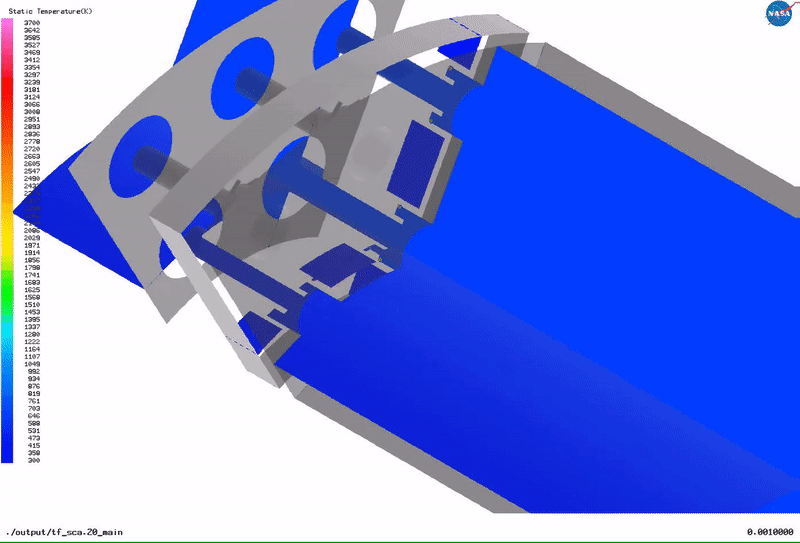The Loci-Stream flamelet module provides capabilities for simulating reacting flows on large geometries for cases that may involve large chemical reaction mechanisms. The flamelet method used in Loci-Stream utilizes a reduced-dimension model of chemical reactions to generate a mapping table that maps chemical states to reaction rates. These flamelet-generated tabulations provide a computationally efficient way to simulate a reacting flow compared to evaluating a full chemical reaction mechanism. The trade-off is that a flamelet table may not capture second-order physics, such as recombination reactions & soot formation. A flamelet table tool is provided for generating flamelet tables that are parameterized by the mixture fraction (Z) and a progress variable (C). More information about the flamelet table tool and the flamelet models can be found on our documentation page. The flamelet solutions can be generated using FlameMaster and support for flamelets generated using Cantera is currently being added. The flamelet module has been used at the Marshall Space Flight Center for LOX/Methane combustion simulations.
Adiabatic Flamelet Manifold
Flamelet Capabilities
The Adiabatic Flamelet Progress Variable (FPV) model uses a 2D or 3D parameterization of the chemical state space with an optional third dimension being an turbulent closure. The 2D tables have (Z, C) and the 3D tables have (Z, Zvar, C), with Zvar being the dimension that models the effects of turbulence on the chemistry using a standard presumed beta-pdf closure. There is an option for 2D tables to use a thickened-flame closure that handles the turbulence effects outside of the flamelet table. The adiabatic model assumes that the flamelet tables are generated at a fixed pressure, so this feature is best for flows that do not experience significant geometric contractions or expansions in the domain.
Inert Species Flamelet Manifold
Non-adiabatic flamelet tables are utilized for simulations that involve heat loss as would happen through a boundary. In these tables an additional parameter, temperature, is used to account for heat loss effects. Special flamelet solutions must be generated to use this type of flamelet table. These solutions utilize a control point in the domain that represents a temperature defect from the standard adiabatic solution.
The flamelet module supports flamelet tables that have a fuel/oxidizer and an inert species. This inert species feature is useful for situations where it may not be appropriate to specify a fully-combusted initial condition, such as in hypergolic thrusters. For inert flamelet tables a third dimension is added that contains the diluent species mass fraction.
Compressible Flamelet Manifold
The compressible flamelet progress variable model (FPVC) uses a mixture Peng-Robinson equation of state (PREOS) that permits a single flamelet table to provide thermodynamically consistent quantities across a range of pressures, in contrast to the more standard fixed-pressure flamelet tables that are used. In this model, flamelet solutions are generated using either the ideal gas equation of state or the PREOS, and during the tabulation process, derivative quantities of the equation of state are also tabulated that provide for an approximation of thermodynamic states that deviate from those contained within the table. This model is good for flow geometries that have expansions and contractions. The PREOS includes non-ideal solution (non-zero volume and enthalpy of mixing) mixing rules based on corresponding-states principles.


